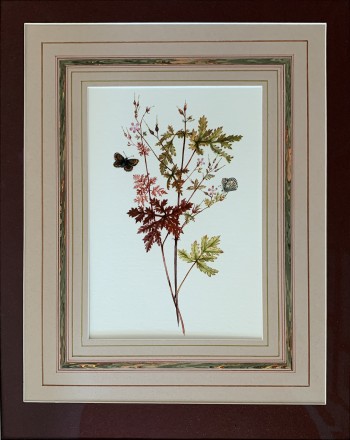
Mount Decoration

An additional function of a mount is to create a space that may be used for decoration. In Europe the decoration of mounts became particularly popular during the eighteenth century and the techniques became known as “French Mounting” - an arrangement of lines, sometimes filled with a light wash, set around the picture, the aim being to guide the eye gently into the painting or drawing. This popularity was inextricably tied what might be considered as the ‘Golden Age of Watercolour’ in Britain between 1750 and 1850 and to the establishment of watercolours as an independent and mature painting medium in the style of Paul Sandy(1730-1839), Thomas Girtin(1775-1802) and of course Turner(1775-1851); three artists who are accredited with the classical school of English water-colourists.
Mount decoration continued through the Victorian period but this traditional art gradually declined and today it is practised by very few framers. The reason for this decline is probably due to the increase in popularity of the double mount and the trend of minimalistic interior decor; certainly, many picture framers do not offer this service as they find the skill of ruling of lines difficult, time consuming and perhaps non-productive in terms of cost. In addition, customers may not be aware that such a service is offered by framing workshops.
The lined mount shows one of six mounts design by Mal and based on a number of mounts produced by the Casa Gennari studio d’Arte, Italy, in the 16th/17th century. The studio dArte was created by Italian Grand Master Giovanni Francesco Barbiere otherwise known as Guercino, a prolific artist and draughtsman who completed no fewer than 106 large altar-pieces including that of one of the most important altar-pieces in St Peters’
The flower mount is decorated with a 5mm wide marbled panel surrounded by seven ruled lines of differing colours, thicknesses and spacing designed to enhance the artwork.
At Harlequin Frames Mal has developed an expertise in the design and use of ruled lines, wash panels and the use of marbled papers to decorate a mount thereby enhancing the artwork.
